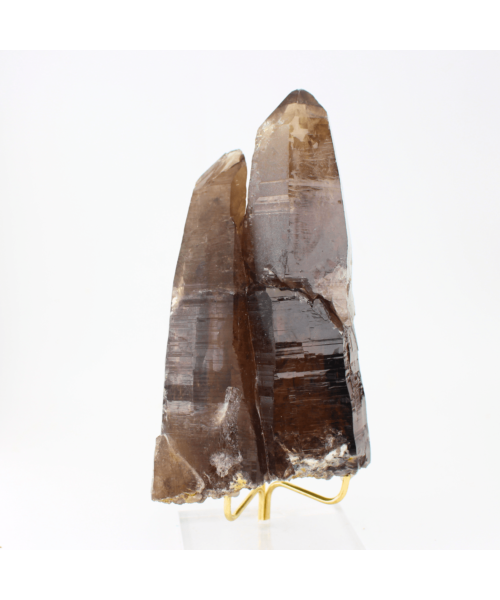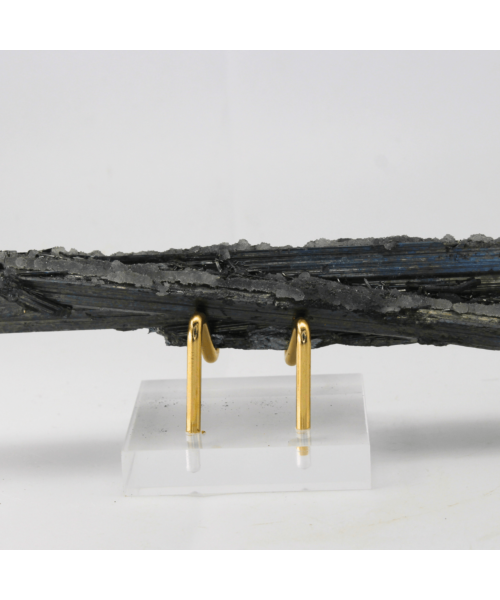Quartz With Chlorite Naturally Terminated Himalayas 324g
Quartz is a versatile and widely appreciated mineral that belongs to the family of silicates. Composed of silicon and oxygen atoms arranged in a crystal lattice, quartz exhibits a remarkable range of colors, forms, and applications. Its name is derived from the German word "Quarz," emphasizing its prevalence in the Earth's crust.
Physical Characteristics:
Color: Quartz comes in a spectrum of colors, including clear, white, purple, pink, yellow, brown, and smoky. Some varieties, such as amethyst and citrine, showcase distinct hues.
Transparency: Ranging from transparent to translucent, quartz crystals often have a glass-like clarity, allowing light to pass through them.
Crystal System: Quartz typically crystallizes in the hexagonal system, forming six-sided prisms terminated with pyramidal points.
Varieties:
Amethyst: Purple quartz, often prized for its rich and regal color.
Citrine: Yellow to golden-brown quartz, often associated with warmth and positivity.
Rose Quartz: Pale to deep pink in color, symbolizing love and emotional healing.
Smoky Quartz: Exhibiting a smoky gray to brownish hue, this variety is valued for its earthy tones.
Properties:
Hardness: Quartz is relatively hard, scoring 7 on the Mohs scale, making it durable and suitable for various applications.
Luster: Its luster can vary from vitreous to waxy, depending on the specific variety.
Density: Quartz has a moderate density, contributing to its use in jewelry and decorative applications.
Applications:
Jewelry: Quartz's aesthetic appeal, combined with its durability, makes it a popular choice for gemstones and jewelry.
Construction: Due to its hardness and resistance to weathering, quartz is used in the production of concrete and various construction materials.
Electronics: Quartz crystals are crucial components in electronic devices, serving as oscillators in watches and timekeeping instruments.
Metaphysical Uses: Quartz is often associated with spiritual and metaphysical properties, believed to enhance clarity, balance, and positive energy.
Formation:
Quartz is commonly found in igneous, metamorphic, and sedimentary rocks. It can crystallize from magmatic fluids, metamorphic processes, or precipitate from hydrothermal solutions. Large and well-formed quartz crystals are often found in geodes and cavities within rocks.
Locations:
Quartz deposits are widespread, with notable sources including Brazil, Madagascar, the United States, and the Swiss Alps.
Whether admired for its aesthetic appeal, harnessed for industrial purposes, or revered for its metaphysical properties, quartz stands as a mineral of enduring significance and widespread utility.









Please complete your information below to login.
Sign In
Create New Account